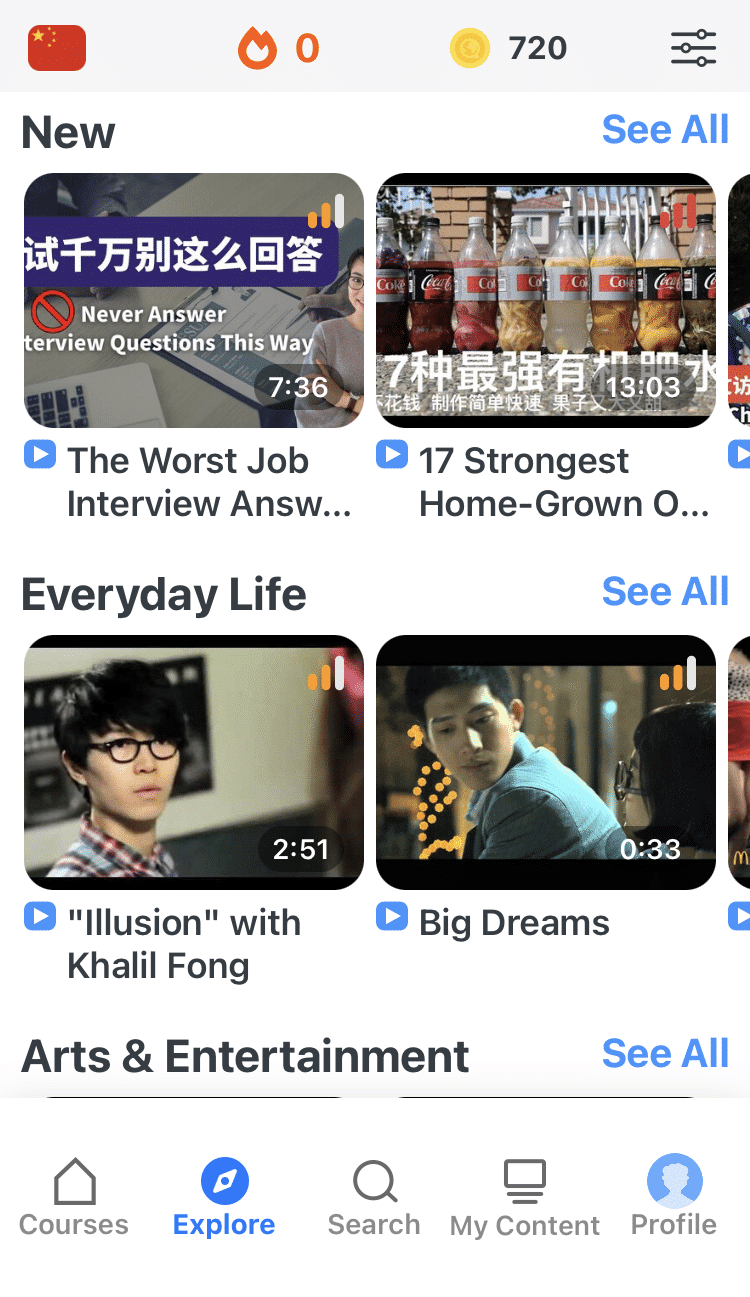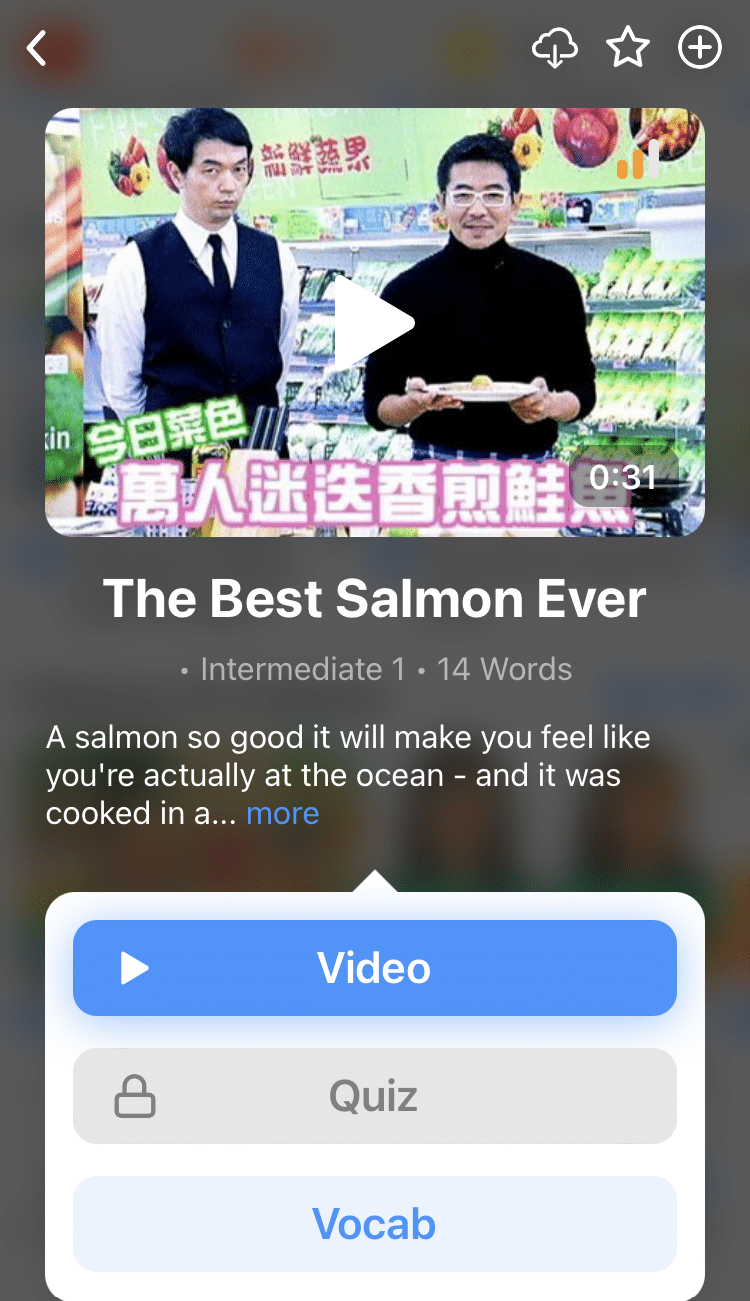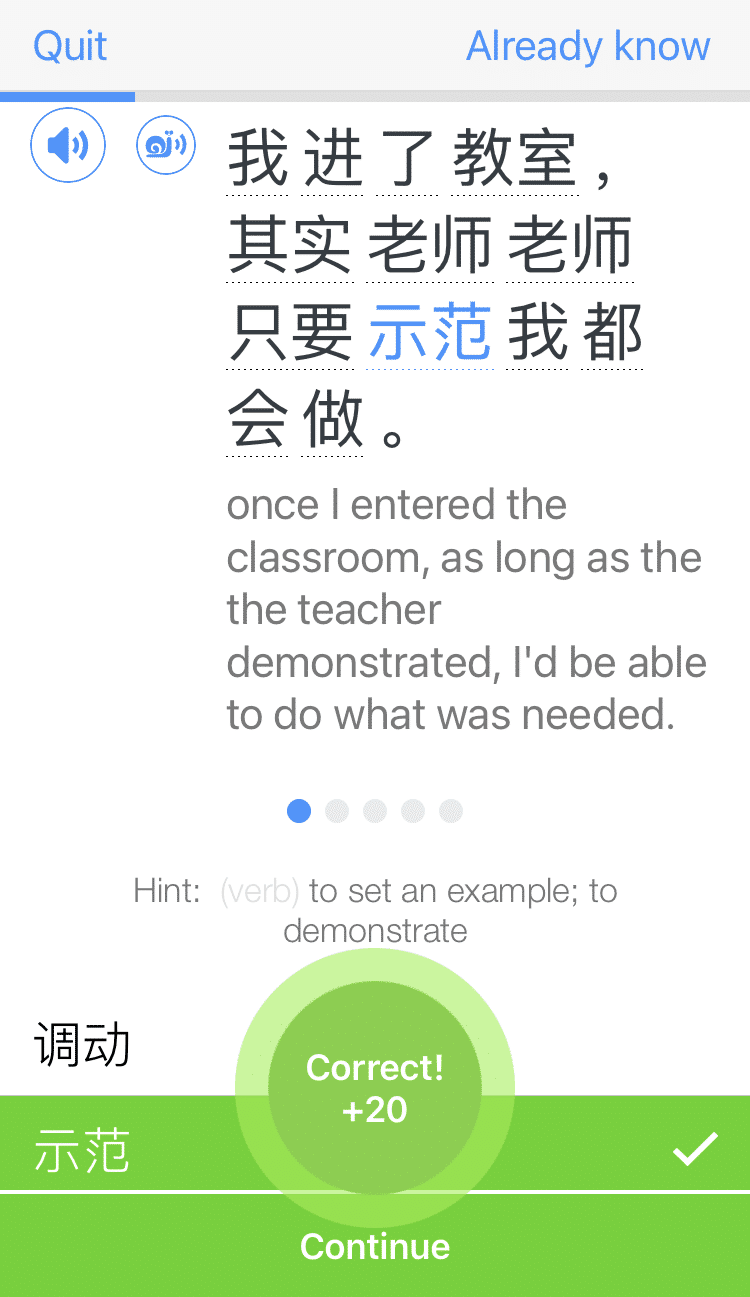
The 10 Hardest Chinese Words to Pronounce (Audio and Pronunciation Guides Included)
Yin and yang, P.F. Chang’s… Chinese words can’t be all that difficult to pronounce, right?
The truth? Chinese has vocab words that are difficult to read out loud at first because our minds automatically think in English when faced with pinyin.
Believe it or not, you already know all the sounds of those difficult words, despite pinyin being drastically different from the Latin alphabet.
We’ll show you how to tackle those typically hard-to-pronounce Chinese words without breaking a sweat.
Contents
- 1. 四十四 (sì shí sì) — 44
- 2. 去 (qù) — go
- 3. 日 (rì) — sun
- 4. 月亮 (yuè liàng) — moon
- 5. 喝 (hē) — to drink
- 6. 寸 (cùn) — inch
- 7. 出租车 (chū zū chē) — taxi
- 8. 自行车 (zì xíng chē) — bicycle
- 9. 鞋子 (xié zi) — shoes
- 10. 裙子 (qún zi) — skirt
- How to Pronounce Difficult Chinese Vowels
- How to Pronounce Difficult Chinese Consonants
- And One More Thing...
Download: This blog post is available as a convenient and portable PDF that you can take anywhere. Click here to get a copy. (Download)
1. 四十四 (sì shí sì) — 44
This one’s definitely a tongue twister on its own, having to switch between the consonants s and sh. The pinyin consonants s and sh have the same pronunciation as the pinyin si and shi, so this word contains sounds that you already know from the pinyin alphabet system.
What’s most difficult about 四十四 is incorporating an “r” sound into the mix even though it’s not indicated in the pinyin. But referring to the guide above, you’re basically saying “si shr si,” with the fourth, second and fourth tones respectively.
2. 去 (qù) — go
One thing you have to know about the pinyin vowel u is that it sounds like ü when it’s preceded by the consonants j, q, x and y.
Thus, rather than pronouncing 去 as “ch-oo,” you’d pronounce it as the word “chew” with a small, round mouth and in the fourth tone.
3. 日 (rì) — sun
Ri sounds exactly as r does in the pinyin alphabet, so it shouldn’t be completely out of your comfort zone. The key is to not resort to American phonetics when you see r in pinyin.
As I indicated in the previous section, 日 sounds more like “ir” in the word “irk,” with emphasis on the “r” and with the fourth tone applied.
4. 月亮 (yuè liàng) — moon
Remember what I said about u following j, q, x and y, and earlier when I pointed out that ue is actually üe minus the umlaut? The combination ue on its own can be pretty tough to pronounce, though when combined with a consonant, pronunciation is a little more straightforward.
月 is said like the word “you-eh,” then 亮 would be “lee-ahng.” Both characters are pronounced with the fourth tone, so that shouldn’t be too hard.
5. 喝 (hē) — to drink
Not to be mistaken for the English word “he,” the pronunciation of 喝 is actually “h-uh,” though it isn’t said the same way as you would say “huh.”
Hē is a longer syllable and said with much less gusto in comparison, as it’s said in the first tone.
6. 寸 (cùn) — inch
Since 寸 begins with the pinyin consonant c, the u doesn’t need to be pronounced the same as ü.
The most difficult part about this word is getting the c right; the rest is smooth sailing. As I’ve said before, c is like “tsi,” so 寸 would be “tsi-un” together with the fourth tone.
7. 出租车 (chū zū chē) — taxi
The challenge here is the ch-z-ch combination because it has you changing positions of your tongue, then your mouth and tongue. That might have not made any sense just yet, but you’ll see what I mean once you say the word yourself.
Pronounce 出 like “ch-oo” (not the same as “choo” like the sound of a train), 租 as “tzi-oo” and 车 like “ch” + “uh,” using the first tone with all three characters.
8. 自行车 (zì xíng chē) — bicycle
Here’s a term that uses three letters from the list of difficult consonants. Although the pinyin looks rather intimidating, it’s all just about breaking it down into sounds you recognize.
For 自, you’d say it as “tzi” with the fourth tone; for 行, you’d say it as “shing” with the second or rising tone; and for 车, you’d say it as “ch-uh” with the first tone.
9. 鞋子 (xié zi) — shoes
Just like we did with the previous terms, let’s change the pinyin into American English sounds you’d understand.
鞋子 can be read as “sh-ye tzi,” with the rising tone on just the first character. Not too hard to pronounce when it’s put that way, right?
10. 裙子 (qún zi) — skirt
Taking in everything we’ve covered in the previous nine terms, this might not seem as complicated anymore.
In American English, 裙子 would be read as “ch-win zi,” with the second tone on just the first character
How to Pronounce Difficult Chinese Vowels
| Chinese Vowel | Pronunciation | Example |
|---|---|---|
| e | Sounds like "uh." | 饿 (è) — hungry |
| u | Sounds like "oo" in "zoo." | 不 (bù) — not |
| ü | Say "ew" with a small, round mouth. | 女 (nǚ) — woman |
| ue | Say "ew" with a small, round mouth + "eh." Notice the u here is basically ü without the umlaut. | 学 (xué) — to study |
| ie | Sounds like "ee" + "eh." | 别 (bié) — don't, other |
You can always refer back to an earlier guide that breaks down all the Chinese vowel sounds and combinations.
How to Pronounce Difficult Chinese Consonants
| Chinese Consonant | Pronunciation | Example |
|---|---|---|
| q | Sounds like “chee” in “cheese.” | 请 (qǐng) — please |
| x | Sounds like the word “she” but with a wider mouth. | 想 (xiǎng) — to think, want to |
| zh | Sounds like “jur” in “jury” but with a smaller mouth. | 这 (zhè) — this |
| ch | Sounds like “chr.” | 吃 (chī) — to eat |
| sh | Sounds like “shr.” | 是 (shì) — to be |
| r | Sounds like “ir” in “irk.” | 人 (rén) — person |
| z | Sounds like “tzi,” where the “zi” sounds like the beginning of “zip.” | 在 (zài) — in, on, at |
| c | Sounds like “tsi,” where the “si” sounds like the beginning of “sip.” | 错 (cuò) — wrong |
You can check out the master list of pinyin consonants if you need help with any others that aren’t listed here.
These sounds can seem tricky at first because they’re not as familiar, but they’ll be rolling off your tongue with enough practice!
To start off, try playing the audio for each of the words and then repeating them out loud.
You can even look them up on FluentU’s multimedia dictionary, which includes plenty of sentence and video examples.
FluentU takes authentic videos—like music videos, movie trailers, news and inspiring talks—and turns them into personalized language learning lessons.
You can try FluentU for free for 2 weeks. Check out the website or download the iOS app or Android app.
P.S. Click here to take advantage of our current sale! (Expires at the end of this month.)
And if you really want a challenge, go for Chinese tongue twisters.
Soon enough, there won’t be any new Chinese words that you can’t pronounce!
Download: This blog post is available as a convenient and portable PDF that you can take anywhere. Click here to get a copy. (Download)
And One More Thing...
If you want to continue learning Chinese with interactive and authentic Chinese content, then you'll love FluentU.
FluentU naturally eases you into learning Chinese language. Native Chinese content comes within reach, and you'll learn Chinese as it's spoken in real life.
FluentU has a wide range of contemporary videos—like dramas, TV shows, commercials and music videos.
FluentU brings these native Chinese videos within reach via interactive captions. You can tap on any word to instantly look it up. All words have carefully written definitions and examples that will help you understand how a word is used. Tap to add words you'd like to review to a vocab list.
FluentU's Learn Mode turns every video into a language learning lesson. You can always swipe left or right to see more examples for the word you're learning.
The best part is that FluentU always keeps track of your vocabulary. It customizes quizzes to focus on areas that need attention and reminds you when it’s time to review what you’ve learned. You have a 100% personalized experience.
Start using the FluentU website on your computer or tablet or, better yet, download the FluentU app from the iTunes or Google Play store. Click here to take advantage of our current sale! (Expires at the end of this month.)






